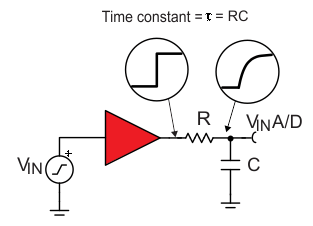SLYY211 October 2021 TMS320F2800132 , TMS320F2800133 , TMS320F2800135 , TMS320F2800137 , TMS320F2800152-Q1 , TMS320F2800153-Q1 , TMS320F2800154-Q1 , TMS320F2800155 , TMS320F2800155-Q1 , TMS320F2800156-Q1 , TMS320F2800157 , TMS320F2800157-Q1 , TMS320F280021 , TMS320F280021-Q1 , TMS320F280023 , TMS320F280023-Q1 , TMS320F280023C , TMS320F280025 , TMS320F280025-Q1 , TMS320F280025C , TMS320F280025C-Q1 , TMS320F280033 , TMS320F280034 , TMS320F280034-Q1 , TMS320F280036-Q1 , TMS320F280036C-Q1 , TMS320F280037 , TMS320F280037-Q1 , TMS320F280037C , TMS320F280037C-Q1 , TMS320F280038-Q1 , TMS320F280038C-Q1 , TMS320F280039 , TMS320F280039-Q1 , TMS320F280039C , TMS320F280039C-Q1 , TMS320F280040-Q1 , TMS320F280040C-Q1 , TMS320F280041 , TMS320F280041-Q1 , TMS320F280041C , TMS320F280041C-Q1 , TMS320F280045 , TMS320F280048-Q1 , TMS320F280048C-Q1 , TMS320F280049 , TMS320F280049-Q1 , TMS320F280049C , TMS320F280049C-Q1 , TMS320F28075 , TMS320F28075-Q1 , TMS320F28076 , TMS320F28374D , TMS320F28374S , TMS320F28375D , TMS320F28375S , TMS320F28375S-Q1 , TMS320F28376D , TMS320F28376S , TMS320F28377D , TMS320F28377D-EP , TMS320F28377D-Q1 , TMS320F28377S , TMS320F28377S-Q1 , TMS320F28378D , TMS320F28378S , TMS320F28379D , TMS320F28379D-Q1 , TMS320F28379S
- 1 Message from the editors
- 2 System Design
- 3 Controllers
- 4 ADC
- 5 Comparator
- 6 Processing
- 7 Encoders
- 8 Pulse width modulation (PWM)
- 9 DAC
- 10Mathematical models
- 11Important Notice
4.7 Settling time and conversion accuracy
 Figure 4-7 Settling time and conversion
accuracy.
Figure 4-7 Settling time and conversion
accuracy.| Settling Time in Time Constants (NTC) | Accuracy in Bits (N) | Settling Time in Time Constants (NTC) | Accuracy in Bits |
|---|---|---|---|
| 1 | 1.44 | 10 | 14.43 |
| 2 | 2.89 | 11 | 15.87 |
| 3 | 4.33 | 12 | 17.31 |
| 4 | 5.77 | 13 | 18.76 |
| 5 | 7.21 | 14 | 20.20 |
| 6 | 8.66 | 15 | 21.64 |
| 7 | 10.10 | 16 | 23.08 |
| 8 | 11.54 | 17 | 24.53 |
| 9 | 12.98 | 18 | 25.97 |
Where
N = the number of bits of accuracy the RC circuit has settled to after NTC number of time constants
NTC = the number of RC time constants. Where one time constant equals R∙C.
| Settling Time in Time Constants (NTC) | Accuracy in Bits (N) | Settling Time in Time Constants (NTC) | Accuracy in Bits |
|---|---|---|---|
| 8 | 5.5 | 17 | 11.78 |
| 9 | 6.24 | 18 | 12.48 |
| 10 | 6.93 | 19 | 13.17 |
| 11 | 7.62 | 20 | 13.86 |
| 12 | 8.32 | 21 | 14.56 |
| 13 | 9.01 | 22 | 15.25 |
| 14 | 9.70 | 23 | 15.94 |
| 15 | 10.40 | 24 | 16.64 |
| 16 | 11.04 | 25 | 17.33 |
Where
NTC = the number of time constants required to achieve N bits of settling. Where one time constant equals R∙C.
N = the number of bits of accuracy